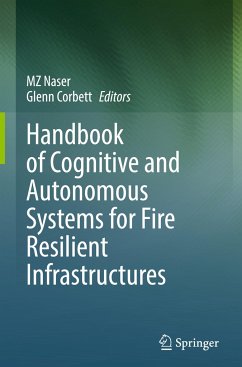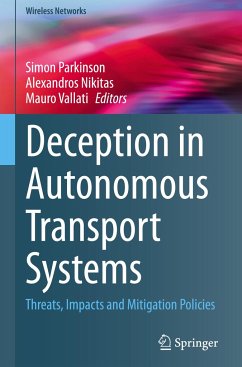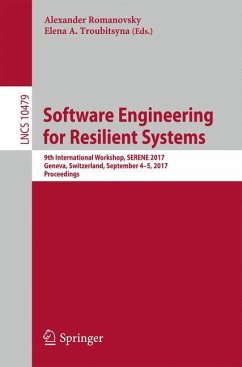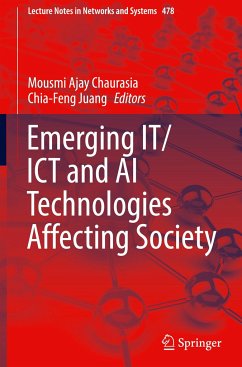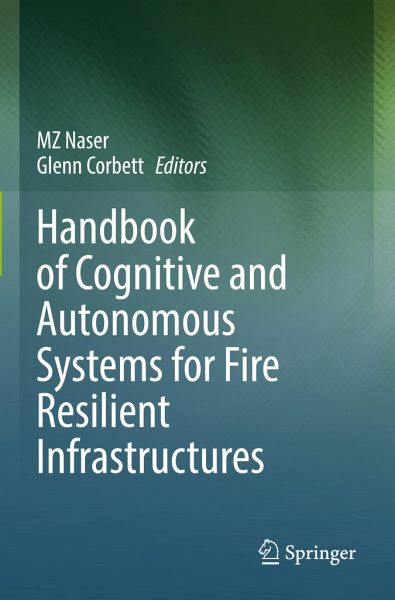
Handbook of Cognitive and Autonomous Systems for Fire Resilient Infrastructures
Versandkostenfrei!
Versandfertig in 6-10 Tagen
98,99 €
inkl. MwSt.

PAYBACK Punkte
49 °P sammeln!
This handbook aims at modernizing the current state of civil engineering and firefighting, especially in this era where infrastructures are reaching new heights, serving diverse populations, and being challenged by unique threats. Its aim is to set the stage toward realizing contemporary, smart, and resilient infrastructure.The Handbook of Cognitive and Autonomous Systems for Fire Resilient Infrastructures draws convergence between civil engineering and firefighting to the modern realm of interdisciplinary sciences (i.e., artificial intelligence, IoT, robotics, sensing, and human psychology). ...
This handbook aims at modernizing the current state of civil engineering and firefighting, especially in this era where infrastructures are reaching new heights, serving diverse populations, and being challenged by unique threats. Its aim is to set the stage toward realizing contemporary, smart, and resilient infrastructure.
The Handbook of Cognitive and Autonomous Systems for Fire Resilient Infrastructures draws convergence between civil engineering and firefighting to the modern realm of interdisciplinary sciences (i.e., artificial intelligence, IoT, robotics, sensing, and human psychology). As such, this work aims to revolutionize the current philosophy of design for one of the most notorious extreme events: fire. Unlike other publications, which are narrowed to one specific research area, this handbook cultivates a paradigm in which critical aspects of structural design, technology, and human behavior are studied and examined through chapters writtenby leaders in their fields.
This handbook can also serve as a textbook for graduate and senior undergraduate students in Civil, Mechanical, and Fire Protection engineering programs as well as for students in Architectural and social science disciplines. Students, engineers, academics, professionals, scientists, firefighters, and government officials involved in national and international societies such as the American Society of Civil Engineers (ASCE), Society of Fire Protection Engineers (SFPE), National Fire Protection Association (NFPA), and Institute of Electrical and Electronics Engineers (IEEE), among others, will benefit from this handbook.
The Handbook of Cognitive and Autonomous Systems for Fire Resilient Infrastructures draws convergence between civil engineering and firefighting to the modern realm of interdisciplinary sciences (i.e., artificial intelligence, IoT, robotics, sensing, and human psychology). As such, this work aims to revolutionize the current philosophy of design for one of the most notorious extreme events: fire. Unlike other publications, which are narrowed to one specific research area, this handbook cultivates a paradigm in which critical aspects of structural design, technology, and human behavior are studied and examined through chapters writtenby leaders in their fields.
This handbook can also serve as a textbook for graduate and senior undergraduate students in Civil, Mechanical, and Fire Protection engineering programs as well as for students in Architectural and social science disciplines. Students, engineers, academics, professionals, scientists, firefighters, and government officials involved in national and international societies such as the American Society of Civil Engineers (ASCE), Society of Fire Protection Engineers (SFPE), National Fire Protection Association (NFPA), and Institute of Electrical and Electronics Engineers (IEEE), among others, will benefit from this handbook.





